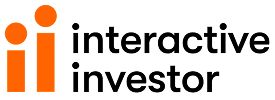RAJAR (Radio Joint Audience Research) is the radio industry’s official audience measurement survey. It is jointly owned by the BBC and the Radiocentre on behalf of the commercial sector, and it is the basis on which all radio trading is based. With the latest survey showing the industry to be in rude health, we thought it would be good to examine what it is and some of the issues around its use.
Over the years there have been several attempts to modernise or re-imagine the methodology behind RAJAR, aiming to move it away from old-fashioned paper diaries used to calculate listenership. But when RAJAR collects around 100,000 diaries a year from volunteers who painstakingly note which stations they listen to and when in the average week, any change is tricky.
In 2011, the survey was updated so that it could be completed online, and 2016 saw the creation of a mobile diary app for smartphones and tablets. Despite all the pressures for change, the team at RAJAR point out that paper diaries are still the main way for listenership to be calculated around the world, so in many ways, they are ahead of others. They also recruit respondents face-to-face, ensuring that the sample is representative of the UK population. A quick look through their website and you are blasted with pages of analytics of how sample sizes are calculated around the country.
However, the push for a more technical approach is still ongoing and RAJAR is continually looking at how tech can be used to achieve this. Some sort of device to listen to the radio exposure independently of a user’s memory is still on the cards as a solution and with the proliferation of smart devices, the odds would favour this approach in the long run. But with other measurement systems such as PAMCo, TGI, YouGov etc. being vital for calculating audiences, the use of diaries for radio should not detract from how strong and important RAJAR still is.
In an ever-changing audio sector, RAJAR now regularly produces their MIDAS Survey, designed to provide insight into how, when and where radio content is being consumed. This covers live and catch-up radio, podcasts, digital tracks, DVD and online video. It also covers traditional AM/FM and digital (DAB) radio, digital media players, computers, mobile phones and voice-activated speakers. Keeping on top of audience measurement no matter where it happens is clearly top of their agenda.
All Response Media viewpoint
It is inevitable that the industry will eventually incorporate some form of electronic measurement, but that is still some way off. Also, as digital audio listening continues to grow, new ways of engaging with listeners will continue to add to the mix, which is perhaps the interesting new area for direct response advertising. If we can programmatically buy audiences and track and measure engagement and response, it has the potential for opening audio to performance advertisers like never before.
However, as much as RAJAR is an industry standard that tells us who has been listening to what over the last few months, it’s not meant to tell us why things happen. It still needs the careful eye of an experienced media planner to interpret how consumers will react to campaigns and ensure we plan activity accordingly. Also, it’s not always about large reach numbers, it’s about efficient campaign delivery. So, while a Capital or a Heart might be listened to by thousands and deliver a high number of leads, if they can’t do that at the right price it will not prove to be sustainable. Therefore, we always look outside of the obvious and challenge the media owners to get cost efficient sales, which ultimately will help build long-term use of radio as a medium. It’s a methodology that has proven successful for TV and is doing so for radio as well.
Learn more information on our radio services.
 4 min read
4 min read 16 November, 2018
16 November, 2018 by
by 

















